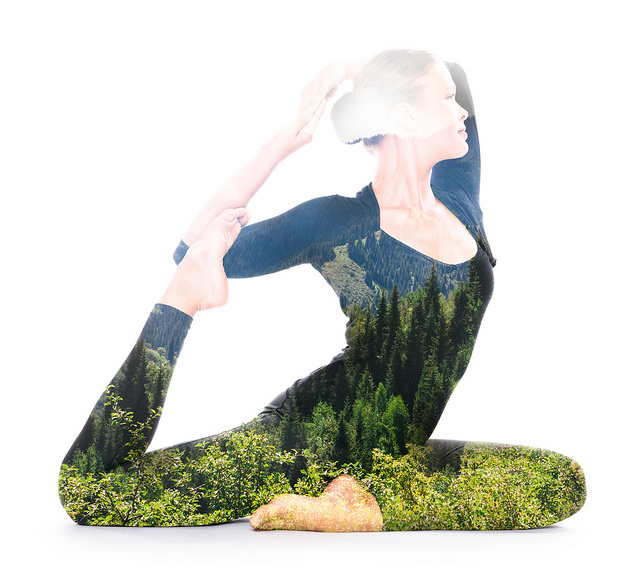If you are an empath, then you know that what it means to feel everything very deeply.
Empaths pick up on the energies of those in their proximity easily, regardless of whether they are best friends or complete strangers.
Empaths are beings of light. Many in the healing professions are empaths.
These characteristics quite often are manifested as an urge to fix it or the need to help someone out when crossing paths with someone who is facing adversity.
Being an empath can quickly become toxic to your mental, physical,and spiritual well-being if you continue to fix other people’s issues and help them out and worry about them without providing for your own self-care and recharging your own energetic reserves.
Empaths who are self-aware to this know that self-care is of the utmost importance. If you one of these highly sensitive beings and you use your yoga practice in this way, it’s important to be conscientious and self-aware when in the public yoga studio.
But empaths must be mindful to be truly present in their self-care practice, and honor it as just that—yoga for self-care.
Empaths may have a difficult time “turning off” their empathetic powers when they enter the yoga studio because there simply is no on/off switch for this type of ability.
But never fear—there are skills and tricks to being an empath in a public yoga class. You can still go to your favorite yoga studio without feeling like you’ve been drained by an energy vampire.
By learning to negotiate the energies of your fellow students in the yoga room, you allow yourself to have a nourishing and healing yoga practice that supports you in the path you walk in life, regardless of whether you’re an empath in the healing profession.
If you’re an empath, or a highly sensitive person, consider these skills and tricks as a way to stay present in your body in the yoga room. This is a true act of self-love in taking back your yoga practice as time you set aside for yourself in the day. It’s a truly brilliant acknowledgement of nourishing yourself before nourishing and helping others.
Practice compassionate detachment.
Whatever happened in someone else’s day is not yours to carry. Trust me, I know it’s hard to see someone else crying in the yoga room and not be concerned. If you’re empath, telling yourself not to care makes you feel like a jerk.
Let it go.
If you know this individual, you can reach out to them after class is over to see if they’re okay. You can practice compassionately removing yourself from feeling empathy in this situation by acknowledging that the student’s needs are being tended to—yoga teachers are trained in holding space for students who are processing emotions.
Location, Location, Location.
There is a precise science to the place you put your mat down in the yoga room. Avoid the very middle of the room because you’ll be surrounded by people on all sides and this increases the amount of energy in your field that you risk being receptive to.
If it’s an option, attempt to place your mat near a window, against a wall, or in the corner of the room, or by the entrance. Any of these places may feel slightly more protected.
Using Mother Nature as a support in your yoga practice.
The presence of plants and nature is calming. While human emotions are chaotic, Mother Nature is not. Mother Nature can rebalance us. Honoring elements of nature as a part of your yoga practice can be supportive in helping you drop into your yoga as an act of self-care. If there is a plant in the yoga classroom, I suggest placing your mat near it to remind you to root down into the earth below you and root down into your body again. If there is no plant you can envision yourself surrounded by a plant or tree that calms you down, in a wooded forest or under a canopy of calming and grounding trees.
Focus on your feet.
Have you ever left your body because of all the emotion in the room? When this happens, reground yourself, even if you have to do it multiple times throughout the class. Remind yourself that you are present—mind, body and spirit—in the yoga studio. Your yoga teacher wishes you knew just how significant grounding through your feet is to your poised presence in the yoga room.
Use stones for guidance.
Certain stones from the crystalline kingdom have specific properties that may help you protect your personal energy field from the energies of those around you. Read more about crystalline guidance here.
Practice energetic grounding, clearing and shielding to protect your energy field.
This is a form of meditation that can take many forms depending on what most resonates with you. Acknowledging that we’re all energetic beings and learning to protect our energetic fields may help us walk our paths more vibrantly in life.
Meet yourself with compassion. Notice if you start to feel disconnected.
If you’ve been disconnecting in your own yoga practice for some time by riding the waves of emotional energy emitted by your classmates, it may be initially overwhelming to your sensitivities to bring the focus back to yourself—especially if you’re working through a particularly emotionally charged time in your life.
You have the option at any moment to filter these emotions if it becomes overwhelming.
And remember this, at any time we’re all just learning and practicing from our past experiences.
May these tips be of mindful service in helping you build a yoga practice that supports, nourishes, and works in conjunction with your empathic superpowers.
“Self-care is not selfish. You cannot serve from an empty vessel.” ~ Eleanor Brownn
Relephant Read:
How to Stop Absorbing Other People’s Stress: 9 Strategies for Empaths.
Author: Caitlin Oriel
Editor: Renée Picard
Image: Victor Tondee at Flickr












Read 0 comments and reply